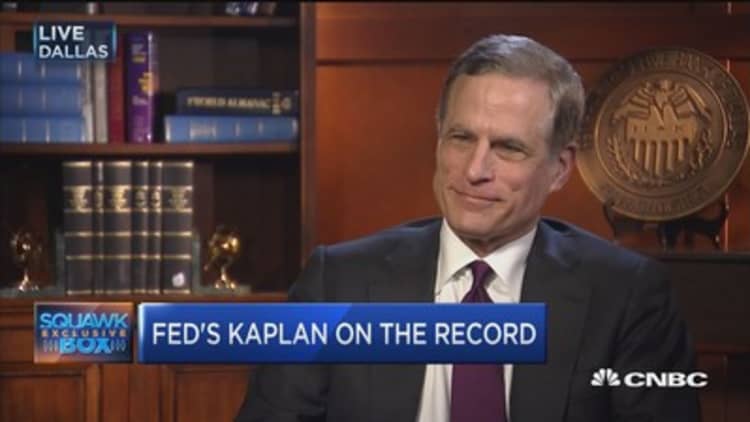Dallas Federal Reserve Bank President Robert Kaplan on Wednesday joined many of his colleagues in saying that the U.S. central bank could start shrinking its $4.5 trillion balance sheet later this year, even as it raises rates "gradually and patiently."
"My view is we could start that process as soon as later this year," Kaplan said in Fort Worth, Texas, at the Cornerstone Credit Union League Annual Meeting, adding that he would prefer the Fed phase in the reductions to its portfolio so as to manage the impact on markets.
He told reporters later that he still sees three rate hikes this year as his "baseline" case, and that plans to shed the Fed's assets do not change that view.
The Fed acquired trillions of dollars' worth of Treasurys and mortgage-backed securities during years of quantitative easing designed to push down long-term borrowing costs and pull the economy out faster from the Great Recession. Now that the labor market is nearly healed and inflation is rising toward the Fed's 2 percent goal, Fed officials want to start shrinking that portfolio.
The last time the Fed signaled a change of course on the balance sheet, in 2013 under Fed Chair Ben Bernanke, yields shot up quickly, delaying the central bank's plans for returning monetary policy to a more normal setting.

Fed policymakers are eager to avoid a repeat of that disruption. They discussed the balance sheet at their most recent meeting, in March, but did not settle on a time frame or any other details, minutes of that meeting show. Several policymakers have suggested since the meeting that balance sheet reductions could begin late this year or early next.
Broad measures of U.S. unemployment show there is still slack in the labor market, but it is getting tighter, Kaplan said. Unemployment in March was 4.5 percent, below what most Fed officials see as full employment.
"We are not at full employment but we are getting there," Kaplan said. Because inflation is also rising, he said, the Fed should be raising rates. At the same time, because of structural headwinds like an aging labor force, economic growth is expected to be slower than in the past.
"We can afford to be gradual and patient," on raising rates, he said. Kaplan is a voter on the Fed's policy-setting panel this year.

